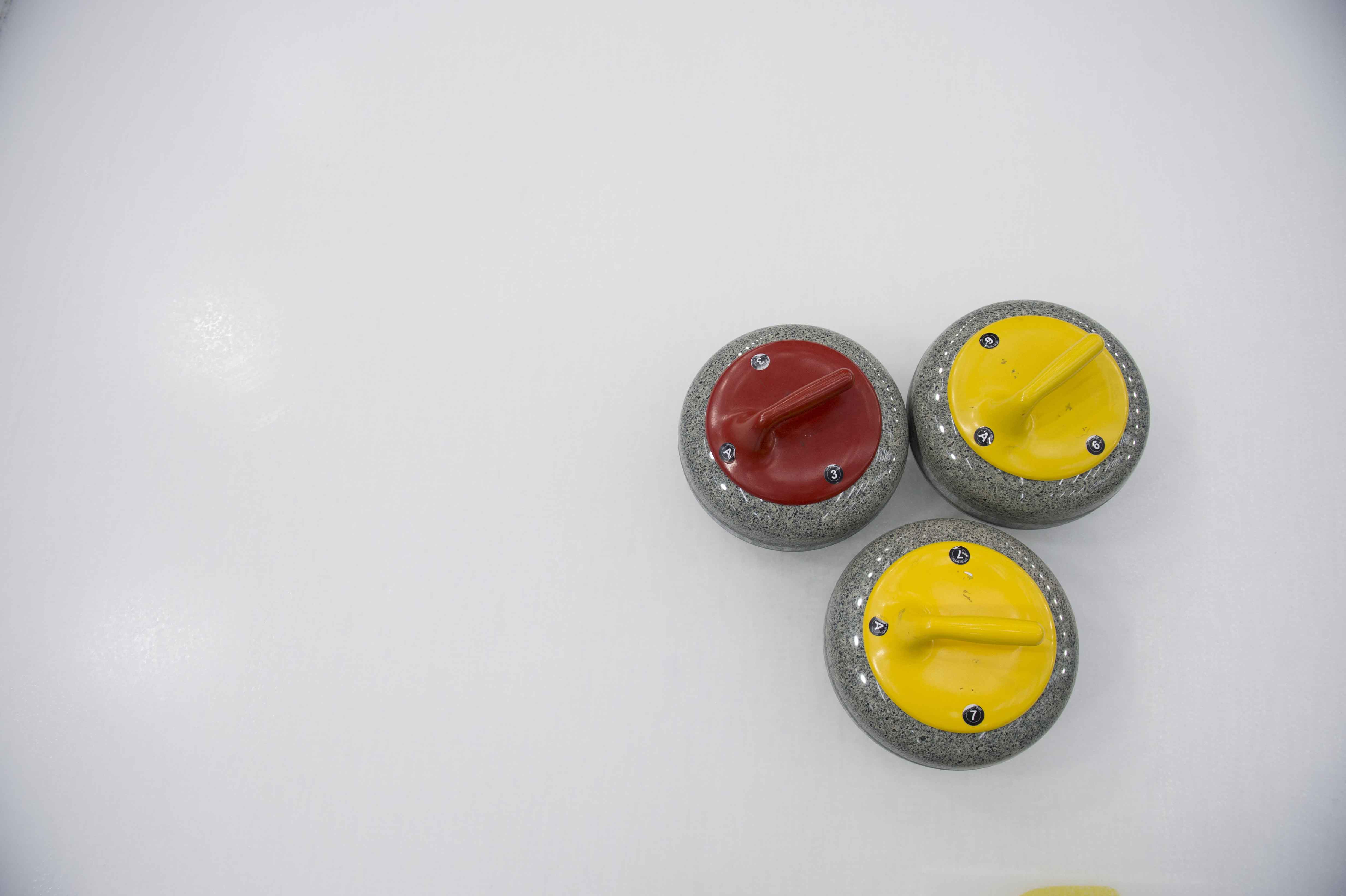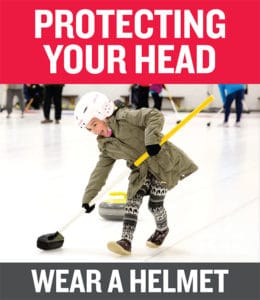
Concussion Prevention and Awareness
Safety First
Curling Canada is committed to creating safe and welcoming environments for curlers of all skill levels this includes concussion prevention and awareness.
All curlers can take some basic steps to prevent falls:
- Ensure grippers are in good condition (no worn edges)
- Wear curling specific footwear or running shoes with pliable soles (court style shoes)
- Never step over rocks or hacks and step onto the ice with “gripper foot” first
- Ensure rocks are “caught” to protect curlers on neighbouring sheets, and are stored to the side/back of the sheets to prevent tripping hazards
- Ensure children don’t push rocks or brooms at the feet of others
Curlers who are new to the sport or under the age of 12, participants with balance issues or part of vulnerable sectors should wear a helmet on ice.
Concussion Prevention and Awareness Guidelines for Youth Curling at Curling Canada Events
To reduce harm to participants the following guidelines will apply to all Youth Curling events operated directly by Curling Canada or at a Curling Canada Seasons of Champions Venue.
- Participants aged 11 and under (as of the first date of the competition) MUST wear approved Head Protection.
- Participants aged 12 and over (as of the first date of the competition) are STRONGLY RECOMMENDED to wear approved Head Protection, especially if the curler is new to the sport and/or does not yet demonstrate skill proficiency on ice.
APPROVED HEAD PROTECTION INCLUDES:
Highly recommended *:
- CSA approved helmets for use on ice and/or snow (ex. hockey helmets, snowboarding helmets, full curling helmets)
- CSA approved helmets for skateboarding and/or equestrian activities.
Acceptable (but not preferred) *:
- Curling headgear (toques or ballcaps) with built in impact plate (tested to CSA standards) with chinstrap
- Bicycle helmets
*With all headgear – chinstraps must be fastened properly when on ice
Not Acceptable:
- Halos/Headbands
Curlers will not be permitted on the ice if they are not wearing at minimum “acceptable” headgear.
All participants (and/their guardians) will:
- sign an Informed Consent and Assumption of Risk;
- acknowledge that they have reviewed Concussion Awareness education materials within the last 12 months;
- adhere to the organization’s Concussion Code of Conduct, including Removal from Play and Return to Play Protocols.
Curling Canada will continually evaluate these guidelines based on product availability, reported injuries and industry recommendations. These guidelines are subject to change.
DOWNLOAD THESE GUIDELINES:
Concussion Awareness and Response
Accidents do happen – all clubs and sport organizations should have clear policies and procedures on how to manage injuries.
Curling Canada has updated its Concussion Policy – which includes clear removal from play and return to play guidelines. Mandatory concussion awareness acknowledgement by participants aged 26 and under and roles and responsibilities of key individuals in the event of a head injury.
Concussion Policy and Concussion Code of Conduct
Learn more about Concussions including the signs and symptoms about concussions with these comprehensive resources:
Parachute Canada
(EN): https://parachute.ca/en/injury-topic/concussion/
(FR): https://parachute.ca/fr/sujet-blessure/commotion-cerebrale/
Making Headway
(EN): https://coach.ca/module/nccp-making-head-way-sport
(FR): https://coach.ca/fr/module/prendre-une-tete-davance-en-sport-pnce
Downloadable Resources:
Helmet Safety Poster
If you would like an accessible version of these PDFs, please email [email protected].



